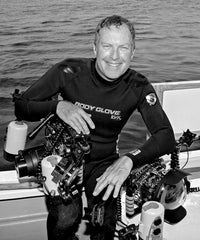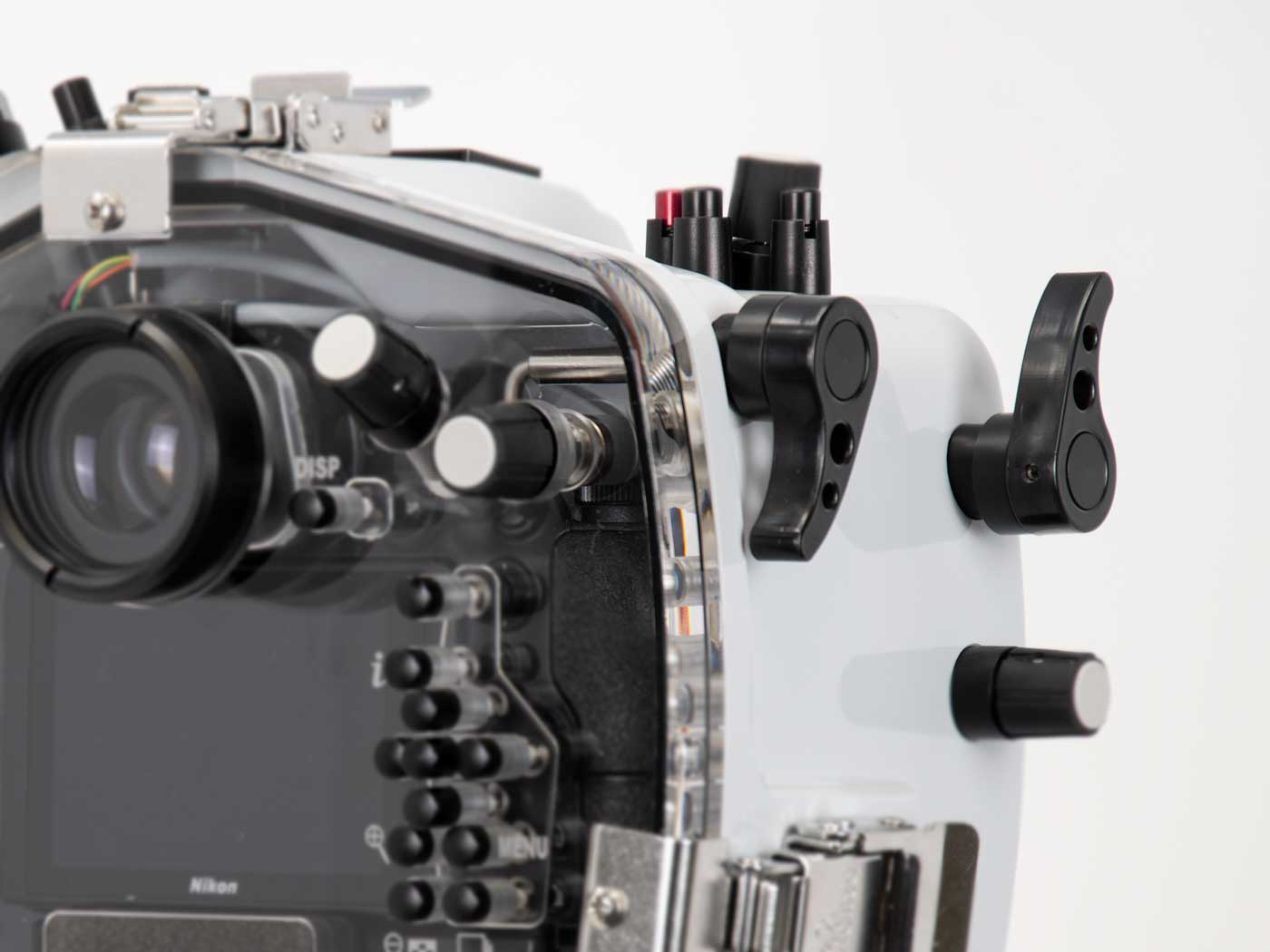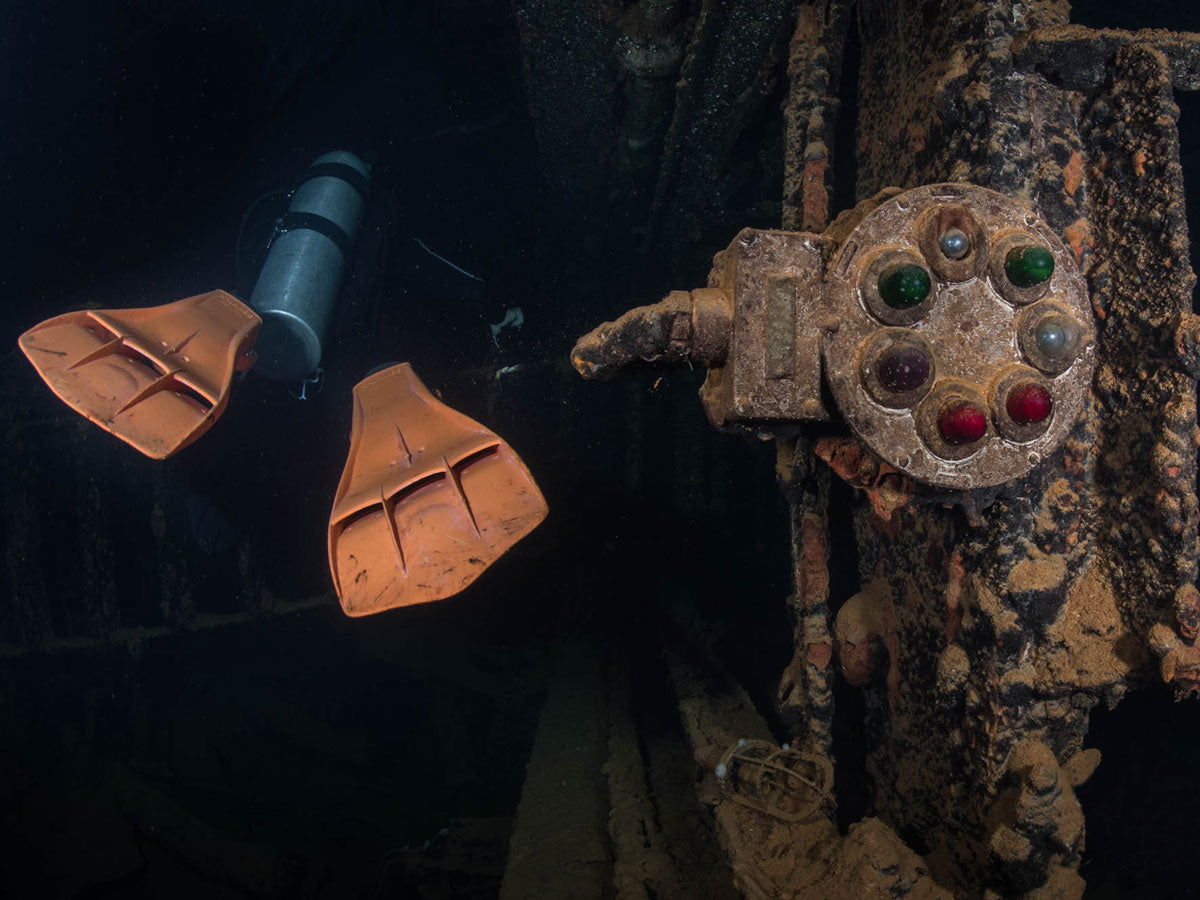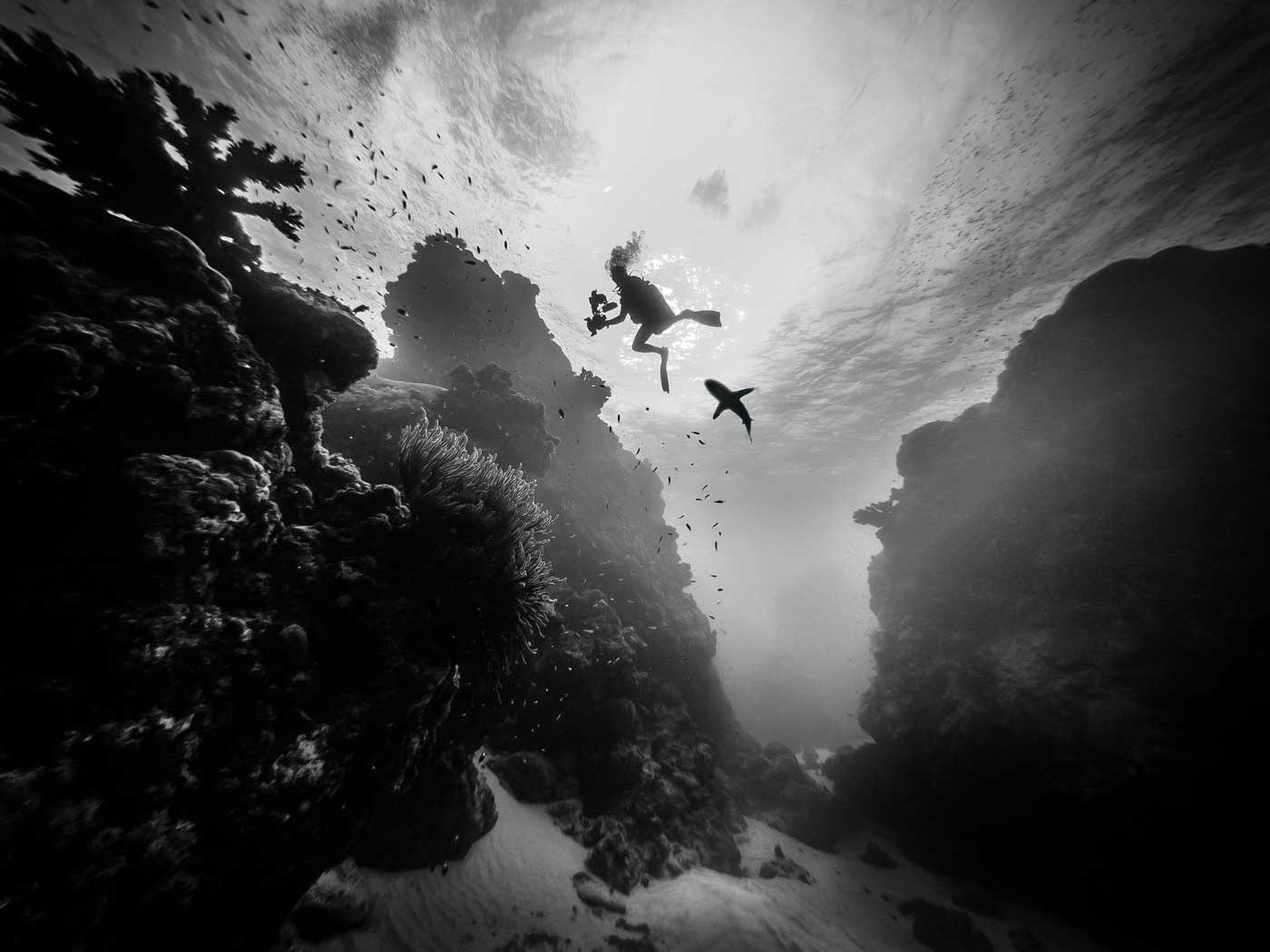By Ambassador David Fleetham
When I am at my safety stop at the end of a day of diving I will often scroll through the images I just shot to pass the three minutes I have here. Good one. Good one. Great one! I can’t wait to get back to my computer, download my card and get a look on the big screen. On occasion this anticipation has ended in confusion as to why it looked so good on the back of the camera and yet was not sharp once I zoomed in on the image on my MacBook. Whatever the reason, those files were quickly followed with the delete button and I then move onto the more promising pixels. Focus is the first determining factor for keep or delete, and the following are some tips for getting it sharp.

Light, depth of field, and autofocus all play huge parts in capturing a super sharp image underwater. Learning how to best use your camera's autofocus functioning can make the difference between a decent photo of a turtle and the perfect expressive capture.
For me, focusing or sharpness takes place twice. Once in the camera when I pull the trigger and then a second time when I put that file though my various steps in Lightroom™ and Photoshop™. We will look at both operations and I will explain what I do to maximize my chance at a tack sharp final product.
Most DSLRs and quite a few fixed lens cameras have the capability of what has come to be known as back button focus (BBF). Canon was the first manufacturer to add this to their line in the late 80’s. All of Canon and most Nikon models in the last decade have had this feature available. Nature and sports photographers were first to pick this up and soon after most housing manufacturers added a control to ergonomically make this viable in underwater photography. BBF separates lens focusing and shutter release, which is preset to happen all together on just the shutter button.

Back button focus (BBF) can be triggered through the AF-ON control on most Canon and Sony cameras, or the AE-L/AF-L button on most Nikons.
On my Canon EOS 5D Mark IV this is designated as the AF-ON button and is one of three buttons together on the upper right corner of the back of the body. It is my understanding that a similar control is available on Nikon and Sony cameras. (Editor's note: Some DSLR and mirrorless models, including most Nikon DSLRs, use the AE-L/AF-L button for the same purpose.) Through the custom menu I turn off the shutter release to autofocus and use the AF-ON button exclusively to achieve this. It can be challenging to have the correct feel for the shutter through the housing control and this is only exaggerated in cold water with the addition of gloves. This eliminates unintentionally shooting a frame when you are trying to focus with the shutter.
Finally I select the AI SERVO mode for focusing and turn on all the focus points in the camera. While holding the housing underwater I can then focus with my thumb and at the same time pull the shutter release with my trigger finger.

Most of our DSLR and mirrorless housings feature an ergonomic trigger lever for this camera function. It can be reached using your thumb while your trigger finger stays on the shutter.
This two-step process takes a little getting used to, but it is now second nature for me. In the case of a wide-angle moving subject, I will hold the AF-ON button/lever down, allowing the camera to constantly update the focus while I am able to shoot frame after frame at the time of my choosing. This is essential for sharks, sea lions or dolphin that will keep a distance and then abruptly come up to kiss your dome port. In such situations it is also desirable to have TTL metering for my Ikelite strobes so I can concentrate on framing rather than fiddling with my strobe output while the shark swims away.

He may look frozen in the photo, but this sea lion is screaming towards the lens. Back button focus is essential for tracking fast moving subjects and pulling off the frame at just the right second.
For macro, the AF-ON button can be used to “lock” the focus, in that, when you are not holding it, the camera will not change the focus even when you trip the shutter. Often I will focus, frame and shoot a subject and then release the AF-ON button and recompose the composition and at the same time move the camera in and out to alter that critical plane that is sharp. I’ll shoot several images of the same subject playing with its placement within the frame. This helps to eliminate the tendency many photographers have of centering the subject in a composition.

Once back in front of my computer I will then do my standard adjustments of color, highlights and shadows and any other corrections in Lightroom™. The only thing I do NOT do is remove backscatter and sharpening.
Directly from Lightroom™ I then open the RAW file in Photoshop and create five identical layers of the file.

On the top layer I go to FILTER – OTHER – HIGH PASS.

You will immediately see your image turn into a strange looking cloudy gray negative. Don’t panic. You will also see the HIGH PASS dialog box with just one adjustment called RADIUS. I start with it set at 3.0 for a file from my 5D Mark IV. The size of the file you are working with and the image itself will determine what the best setting will be. This is often a matter of trial and error. Click OK and then go to the layers panel and pull down the blending mode menu that is on NORMAL as default. Move down the menu and select OVERLAY.

Your image will now return to something you are more used to seeing, only sharper. Zoom in, move around the image and click the eyeball icon to turn visibility of the high pass layer off and back on. You should see a substantial difference with sharpness of your image.
If you are pleased with the amount of sharpening go to the LAYERS menu and select MERGE DOWN (keyboard shortcut COMMAND – E on a MAC) near the bottom.

We are not done yet. Double click the top layer (the sharpened one) and rename it 3.0. I do this to remember the setting I ran the HIGH PASS filter at.

Then drag that layer down one level. So you now have an original layer that has not been sharpened on the top.

Click the three eyeball icons on the lower layers to turn them off.

Next select the ERASER TOOL (E). In the case of this anemonefish, I only want to sharpen the fish itself. I find that if you sharpen areas that are not in focus you tend to just add noise and/or unwanted artifacts to these areas. This is particularly true of blue water or any negative space that is a color gradient. Turn the OPACITY to 100% and then erase what you want to have sharp. Use a large enough brush to have a reasonable feather at the outside of you subject. This way you have a graduated border leading to the sharpened subject.

Anything besides the subject that is also in focus I will erase, in this case egg mass that the anemonefish is attending and the anemone itself.

Turn all the layers back on and click the 3.0 layer off and on to see the extent of what you have done.

If this looks good you can flatten the image and then save it as you wish. If this is not what you want you can then throw away the 3.0 layer and repeat the whole process using a higher or lower RADIUS setting to increase or decrease the level of sharpening.

This male ring-tailed cardinalfish, Ostorhinchus aureus, is protecting and incubating its eggs by carrying them in his mouth, Philippines. Super macro images can be difficult to get pinpoint focus on just the right spot, and so rewarding when you pull of the perfect frame.
 Ambassador David Fleetham left his hometown of Vancouver, Canada, for Maui in 1986 and never looked back. He earned his USCG Captain's license while working in various dive charter businesses, shooting, and submitting his photos to magazines and businesses. One of the most prolific underwater photographers of his time, David now has galleries and agents in over 50 countries that reproduce his images thousands of times each year. Read more...
Ambassador David Fleetham left his hometown of Vancouver, Canada, for Maui in 1986 and never looked back. He earned his USCG Captain's license while working in various dive charter businesses, shooting, and submitting his photos to magazines and businesses. One of the most prolific underwater photographers of his time, David now has galleries and agents in over 50 countries that reproduce his images thousands of times each year. Read more...
Additional Reading
Super Macro Underwater Photography Techniques













